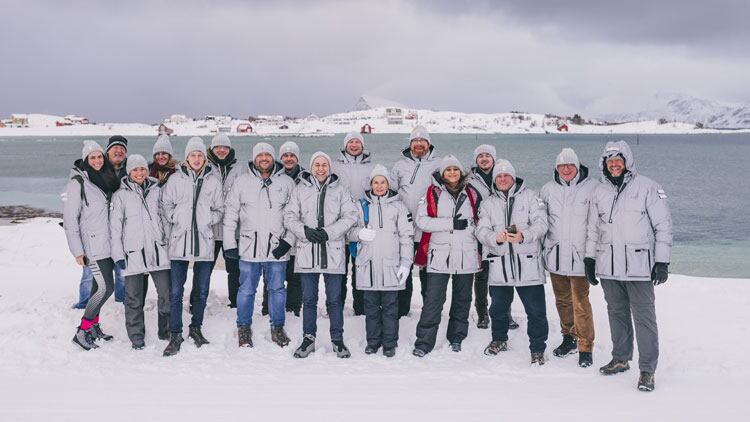Day one
We arrive in the tiny fishing village of Sommarøy in almost total darkness. Our group has driven an hour from the airport at Tromsø, the coach speeding through the snow as the road winds round vast Norwegian lakes. As our group peer through the windows, huge mountains loom out of the gloom, dwarfing the tiny red painted houses dotted along the shoreline.
This area, around 300km above the Arctic Circle, is popular with tourists hoping to catch a glimpse of the Northern Lights, but we’re here to chase a different natural wonder.
Every year from January to April the freezing waters around northern Norway teem with migrating Skrei (pronounced ‘skray’) cod, and the Norwegian Seafood Council takes a troop of chefs and suppliers on an annual pilgrimage to discover not only how the fish is processed by these remote communities, but to try their hand at catching some themselves.
Our bleary-eyed group, led by Michel Roux Jr and Simon Hulstone, includes Sabrina Gidda (Allbright), Chris Galvin (Galvin Restaurants), Steve Groves (Roux at Parliament Square), Russell Bateman (Petrus), Craig Johnston (Marcus at The Berkeley), and Henry Wadsworth (Young National Chef of the Year 2019, soon to join Core). We arrive weary at our hotel to a fresh seafood buffet, ready to be up early to catch the so-called ‘king of cod’.
Day two
It’s not long after we’ve left the harbour that I realise I’m not cut out to be a Skrei fisherman. As our small red boat bounces along the choppy waters, I’m joined by more than a few pale faces who clearly regret sampling the traditional aquavit last night – to the mild amusement of our Norwegian skipper. On our journey we pass several other small boats, each staffed by solo fishermen, who hold up their glistening catch to cheers from the chefs.
As we drop our lines one fisherman tells me it’s been a “brutal” start to meeting quotas for the season, with the cod coming in fast. Skrei comes from one of the world’s largest and most sustainably managed cod stocks, and just 10% of over 400 million migrating fish will be caught and receive the coveted Skrei mark on its dorsal fin following strict quality checks.
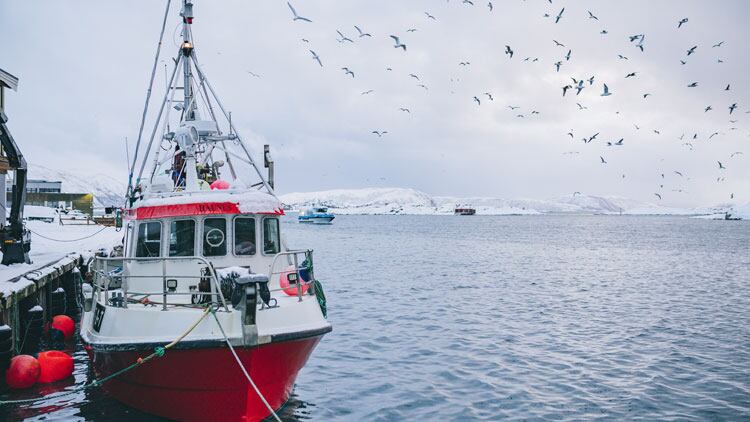
I feel a tug at the line and am hopeful I might have my first Skrei of the day, but instead reel in a smaller, silver fish. “The cat will be happy,” jokes our captain, clearly yet to be impressed with our group’s efforts. It isn’t long before the nearby mountains disappear behind grey clouds, and the snow starts falling thick and fast, slanting into our faces. Roux, who has been an ambassador for the Norwegian Seafood Council for five years, expertly reels in a fat cod, holding it up to applause from the boat. He is a veteran of this expedition, and encourages head chefs across the Roux restaurant portfolio to use Skrei whenever it is in season.
Groves, who heads up the kitchen at Roux at Parliament Square, tries to use it in a different dish each year. “We’ve used it in our take on fish and chips, and cockle tartare sauce,” he says. “At the moment we’ve got it on with cassoulet with white beans and sausage. It’s a great product, it’s consistent, the quality is incredible, and it comes to us fresher than what we get from Scotland.”
Wadsworth, who is on this trip as part of his YNCOTY prize, pulls in a cod with the help of Roux, while Matt Pickop, regional executive chef for airline caterer Gategroup, beams as he poses with the biggest catch of the day.
Arms aching from our efforts we head back to the coast for lunch in Sommarøy’s village hall, where we’re served not just the Skrei loin but also the sliced roe, liver and stomach, which is slow cooked to soften the texture. These are eaten with boiled potatoes and diced raw white onions, alongside flatbread and another shot of aquavit – a tough swallow for some who are (unlike the fish) still slightly green about the gills.
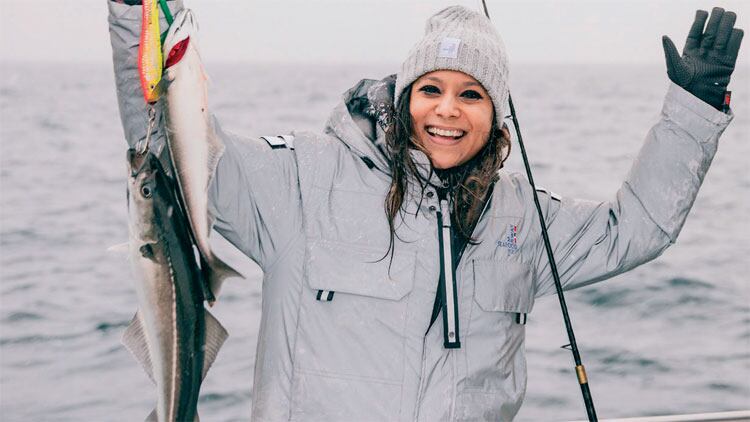
After lunch we trudge past six foot banks of snow to a factory on the other side of the harbour, which processes around 7,500 fish a day. The importance of fishing to this small community is clear, and it’s traditional that the village’s youth – some as young as 10 years old – work on the factory floor. When we visit, a
14-year-old is hard at work, headphones firmly in place, deftly removing the tongues from the Skrei heads, which will themselves later be dried and sold as a delicacy in African countries. These children can earn around 1,600 Norwegian krone (£140) a day (one tells us he is saving up to buy his own fishing boat).
As we board the coach back to Tromsø in the dying afternoon light, gulls scream across the harbour as the last boats come in under a reddening sky. Reflecting on our day Galvin, who oversees seven restaurants in the UK and Dubai with his brother Jeff, describes Skrei as the ‘pig of the sea’. “I like the ethos of nose-to-tail eating,” he says. “You have to be ethical and sustainable. It’s really important, especially for old gits like me, to make sure youngsters are using everything.”
Day three
On a bright, snowy morning we drive 40 minutes out of Tromsø to visit Bottarga Borealis, a factory that processes the by-products of the fish. The team works long hours during the four-month season, preparing and drying the roes to make bottarga. As we’re shown around the chefs are roped in to help, and a battle of
knife skills begins as the group ‘polishes’ the roe, cutting off any remaining membrane before tying them with a noose. These will be left in salt for 18-24 hours before being hung up to dry for 10-15 weeks.
“The point is to create better value on this fantastic raw material,” says our guide. “In 2014 about 13,000 metric tonnes of cod roe was landed in Norway for human consumption, the amounts are staggering. It is probably one of themost nutritious parts of the fish. Our next project is to see what we can do with the intestines and stomach.”
The bottarga has a 12-month shelf life and is commonly grated over dishes. It is popular in the high-end Italian market and launched in the UK this year.
As we head outside a dark bank of cloud appears on the horizon, and within minutes the chefs posing for pictures in the clear harbour are being chilled by pelting snow. Groves, who took off his jacket in favour of a plastic poncho in the factory, now regrets his decision.
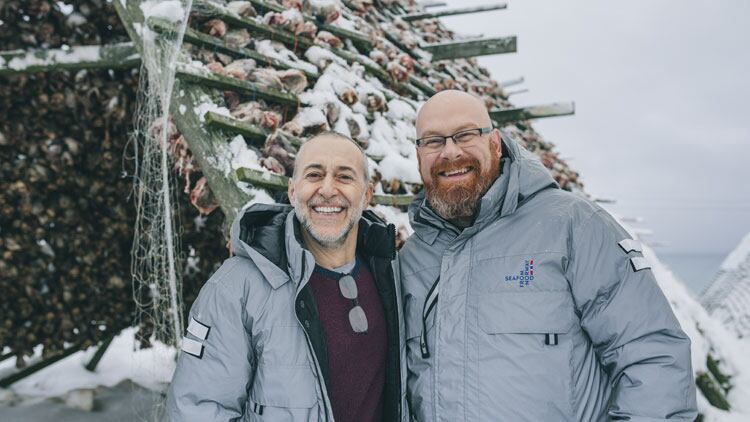
Heading back towards Tromsø we’re shown drying racks, huge triangular wooden structures that dot the landscape like eerie houses. The eyes of hundreds of hanging Skrei heads watch as we trudge beneath one rack so our guide can show us the green netting that is used to protect the strung-up roe from local wildlife.
So what do the chefs make of it all? Johnston recently put Skrei on the lunch menu at Marcus at the Berkeley and Gidda also loves working with it. “It’s such fun to cook with, it really holds its shape,” she says. “It’s like wild garlic; it’s become a natural thing where you really look forward to it every year.”
Groves says he is interested in the difference in flavour between the fresh and dried elements, and mulls over a potential dish. ” I was thinking we could do a nice broth with the dried fish, and maybe have a warm potato salad on the side with some of the bottarga through that,” he says.
Galvin admits he knew little about Skrei before the trip, but is keen to look at introducing it to menus in the future. “I wasn’t really aware of it, but it’s beautiful and something we’d like to use. I’m thinking a simple piece of fish cooked in our wood-fired ovens with some Jersey royals. I love British produce but we don’t have enough. It’s sensible to look abroad when it’s plentiful.”
Driving back through the freezing landscape I reflect on how the yearly arrival of Skrei allows local communities to thrive in a formidable climate. It has certainly earned its nickname, the Norwegian Miracle.
What is Skrei?
Named from the old Norse word for ‘the wanderer’, Skrei is a classification – not a species – of Arctic cod. Every year from January to April the fish return from the Barents Sea to their spawning grounds off the coast of Northern Norway. This journey means they develop an incredibly firm flesh, with a ‘unique’ taste and texture that is recognised by chefs all over the world.
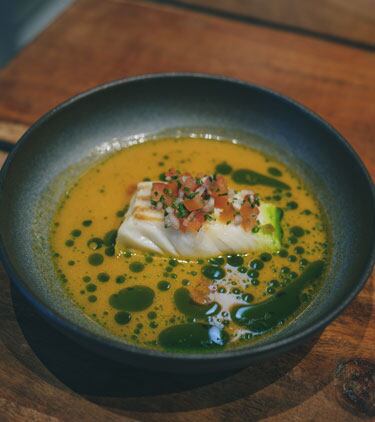
To be classed as Skrei the cod has to be caught during this short season, and meet strict criteria regarding its gutting, handling and processing to ensure it reaches the plate in the best possible condition. Once caught the cod must be removed from the nets quickly so it doesn’t get damaged, then bled in running seawater for around 30 minutes, and subsequently kept in pre-cooled clean seawater, before being packed and shipped within 12 hours of being landed. This method results in its flesh being brilliant white in colour and pearlescent. You can easily tell whether the cod you’ve been supplied with is Skrei as whole fresh fish are required to bear the Skrei brand on their dorsal fin.
This is a web version of an article that first appeared in the March issue of Restaurant magazine, the leading title for the UK's restaurant industry. For more features, comment, interviews and in-depth analysis of the restaurant sector subscribe to Restaurant magazine here

